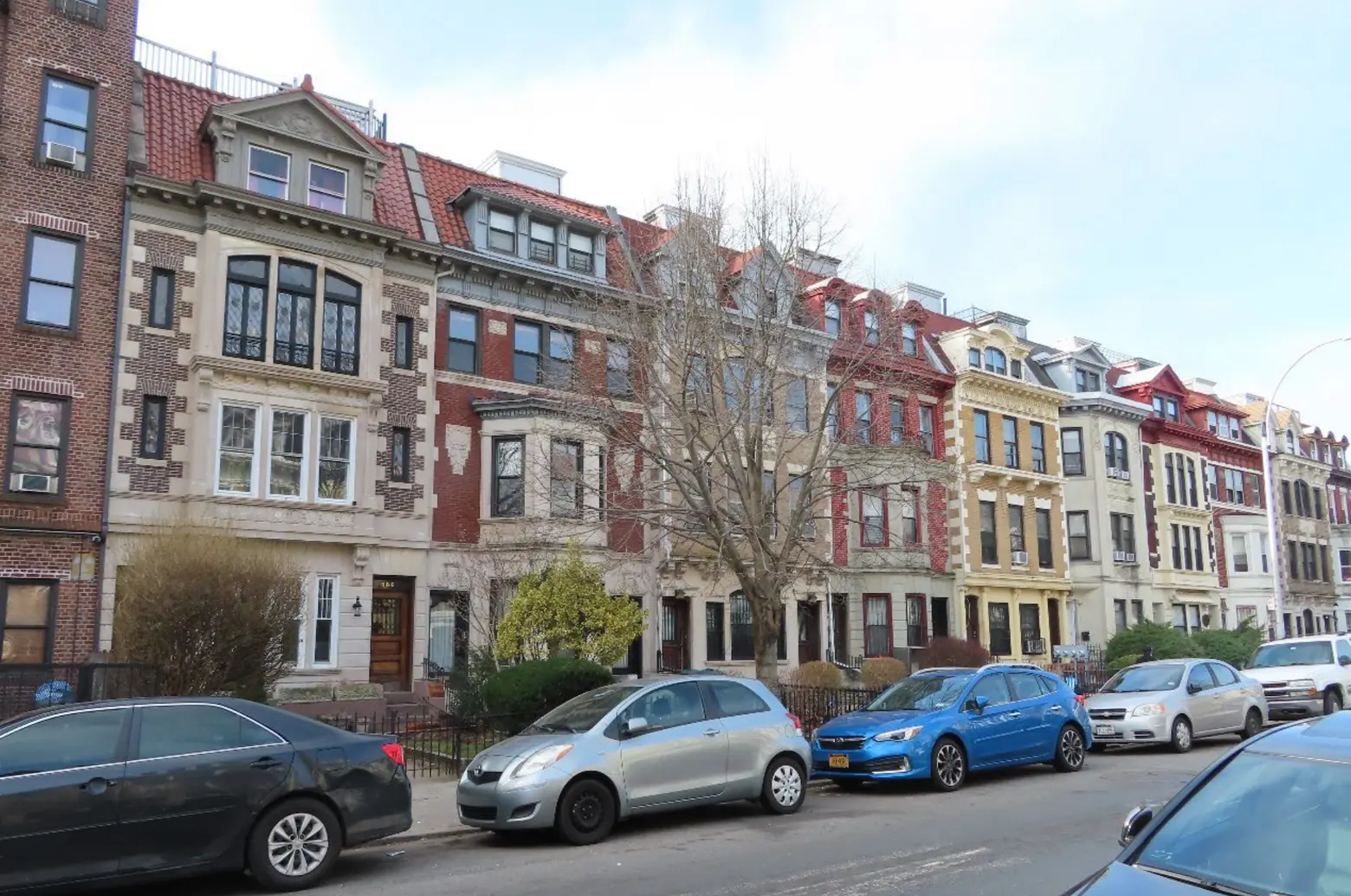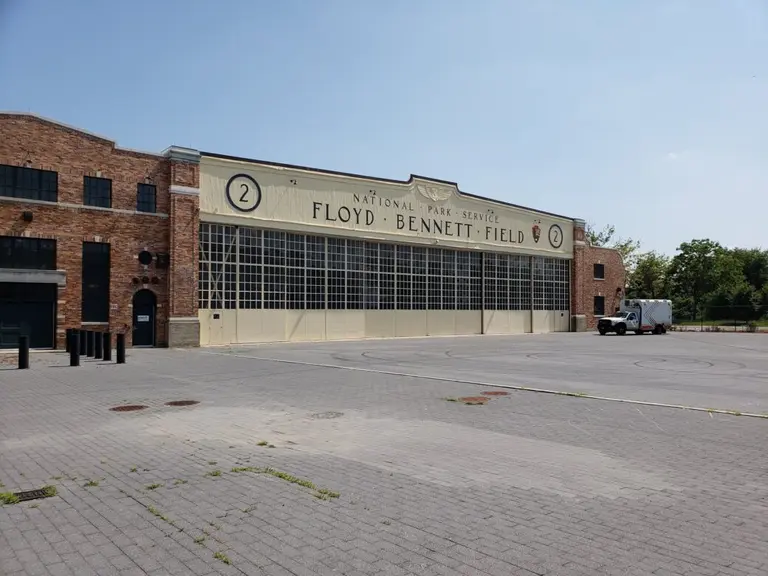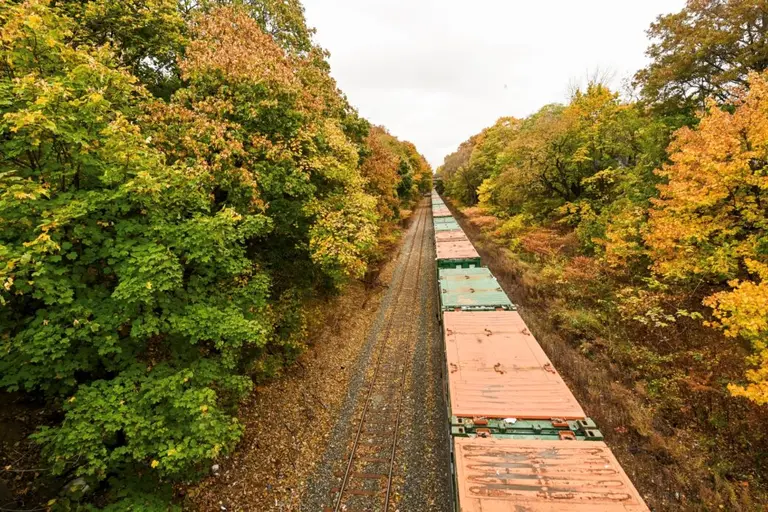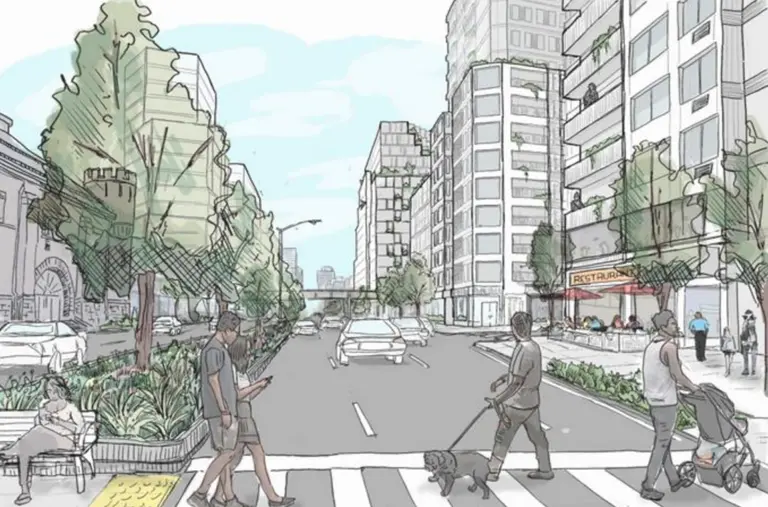NYC designates Flatbush block with distinctive ‘Kinko houses’ as historic district

Photo of Parkside Avenue courtesy of LPC
Brooklyn gained another historic district this week. The Landmarks Preservation Commission on Tuesday voted to designate the Melrose Parkside Historic District, which includes a collection of 38 intact single and two-family homes built by two renowned Brooklyn architects, Benjamin Driesler and Axel S. Hedman. Located on Parkside Avenue between Flatbush and Bedford Avenue in Prospect Lefferts Gardens, the row of homes has a “distinctive appearance and sense of place,” deriving from the two architects’ use of “then popular Neoclassical vocabulary in their designs to harmonize three different types of residences,” according to the commission.
Built by Driesler and Hedman for developers Williams A. A. Brown and Eli H. Bishop & Son between 1909 and 1915, 20 out of the 38 homes were constructed as two-family duplexes with separate private entrances, otherwise known as “Kinko houses.” The other 18 residences on the block were constructed as single-family rowhouses.
The entire district was completed between 1912 and 1915 when two rows of single-family homes designed by Driesler finished construction. Designed for Brown, eight of these homes are “no basement” row houses that stand out for their striking exterior embellishments, which include Jacobean-style gables. Ten of the other homes are “American basement” row houses, designed by Hedman for Eli H. Bishop & Son between 1914 and 1915.
“The city’s 155th historic district is a truly stand-out block in the Flatbush neighborhood of Brooklyn,” Sarah Carroll, LPC Chair, said. “The Melrose Parkside Historic District is a distinctive collection of early-20th-century row houses and duplexes designed in the Neoclassical style by two well-regarded Brooklyn architects. These incredibly well-preserved rows create a strong sense of place, which continues to reflect the history and diversity of Flatbush.”
Up until the 1950s, the majority of residents within the district’s rowhouses and duplexes were white and mostly born in the United States. During the mid-20th century, Flatbush saw an increase in the number of African-American and Afro-Caribbean residents as many Black families left Central Harlem and Bedford-Stuyvesant for Central Brooklyn.
Flatbush has grown to become the center of the city’s Afro-Caribbean community, with more immigrants from the Caribbean arriving in the neighborhood during the 1980s, according to the LPC.
The LPC voted to calendar the district in August after Parkside Avenue property owners voiced support and signed a petition to have their block considered for designation. After being studied by LPC staff, the homes were approved to be considered for calendaring due to their distinct appearance and rich history.
“It gladdens me to see this iconic block-already long recognized by residents and visitors– finally recognized and designated by the LPC. The charming architecture and friendly neighborhood vibe make this little corner of our great and sprawling borough a place that people remember,” Assembly Member Brian A. Cunningham said.
RELATED:

























